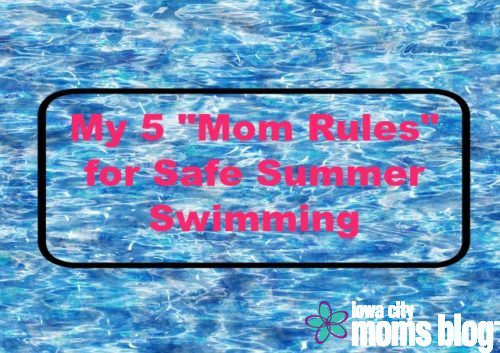Ah, summertime! Three months of warm weather, sunshine, and outdoor play. Nothing quite says summer to me like an afternoon at one of the local swimming pools or lakes for some great water play. I’m not the strongest swimmer around, but splashing and playing in the water is one of my favorite ways to beat the summer heat.
The pool, however, can be a dangerous place. The CDC lists “accidental drowning” as the fifth leading cause of accidental injury death in the United States, and drowning was the leading cause of injury death for those between the ages of 1 – 4.
Many of the accidental drowning deaths occur in children 14 years of age or younger. Many people envision drowning as a loud and dramatic event, with lots of noise and splashing around. In reality, however, drowning is usually a nearly silent event, and takes less than 60 seconds. People who are actually drowning do not have the energy to splash and yell for help. The often struggle silently, with their head tipped back and bobbing up and down at the surface of the water, or appear to be climbing an invisible ladder.
These signs of a person who is drowning have been described by PhD and lifeguard Francesco A. Pia as the “Instinctive Drowning Response”, and it really looks nothing like what you see on TV shows or movies when someone is having trouble in the water. (Please, take a moment now and follow that link to familiarize yourself with how to recognize the signs that someone is drowning.)
I love taking my kids to the pool and the beach, and I want them to grow up loving the water. We’ve taken the safety steps to enroll them in swimming lessons early and often, but I also recognize and respect that the water can be a dangerous place, and the possibility of tragedy occurring is very real.
Lifeguards are a great resource; however, their eyes can’t be everywhere at once, and I know that ultimately I am responsible for the safety of the kids in my charge. Because of that fact, I have a few simple safety rules that I adhere to any time water is involved in our daily play activities.

1. Put away the cell phone.
When I go to the pool or the beach with my kids, the first thing I do is bury my cell phone at the bottom of my bag. I’ll admit this is partly for security, as no one wants to end a great pool day with a stolen electronic device. But mainly, it is so I will not be tempted to check out my Facebook feed or the latest Yahoo “news” stories. In the time that it takes to read and send a text message, a problem requiring my attention can occur. If I am expecting a message or call, I may check it periodically throughout the afternoon, but only at times when my kids are enjoying a snack or a drink and out of the water.
2. No really, put away the cell phone.
Every person has their own tempting distraction. Mine are electronic devices, so to the bottom of the bag it goes.
3. Know your limits.
I have an infant and a preschooler, and I know that I am able to take both of them to the indoor pool by myself during the week or at times of the year when the weekend traffic is light. When we are headed to the outdoor pool, with blaring music and crowds of children, I would want another adult present, at least until our older son has passed a few more levels of swimming lessons. When swimming with my preschooler, I stay where I can comfortably put my feet on the ground. My husband (who is a stronger swimmer than I am) regularly will take our son out into the deeper end and swim with him on his back or float along with him riding along on my husband’s chest.

4. Have a plan.
A high percentage of water-related accidents actually occur in situations when many adults are present. The reason this occurs is that in these types of scenarios, each adult assumes that someone else is watching for signs of danger, when in actuality, no one is. Having a predetermined person who is responsible for water supervision can plug the hole of that possibility, as well as being sure that a verbal and deliberate hand-off occurs whenever the designated adult needs to leave his or her post for any reason.
5. Take care of your body.
This includes sunscreen, hydration, and nutrition. Nothing ruins a great day at the pool like a painful sunburn. Most manufacturers recommend applying sunscreen to all exposed areas at least 30 minutes before entering the water, and then reapplying every 1-2 hours throughout the day. When taking a break to reapply that sunscreen, we be sure to take time to drink plenty of water and have a quick snack to prevent dehydration and hunger, which can happen very quickly and can also ruin a great day of fun.
I’m sure the day will come when my kids will be strong enough swimmers that I will be comfortable enjoying a good book or some Facebook time when poolside. For now, however, I’ll be keeping two eyes on them at all times, reminding them to swim within their limits (while also respecting my own), pushing the sunscreen, healthy snacks, and drinking water, and watching for signs that they might be tired or struggling. Newsfeeds and status updates can wait for later, as we all have fun and come home safely–tired, happy, and waterlogged.
Happy swimming everyone!










